Stories
Caroline Church & State of Grace
1990-2009 (label)
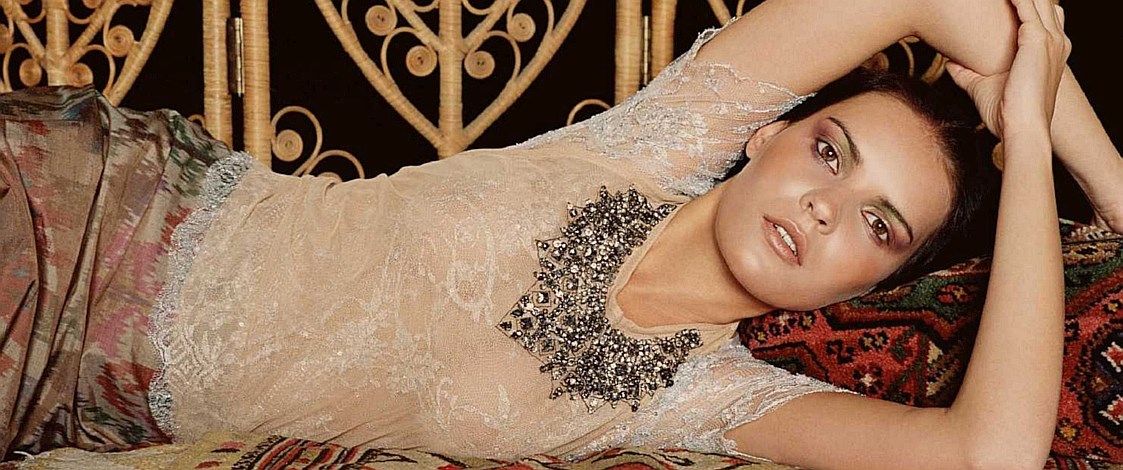
Designer Caroline Church was destined to sew. Her mother, a needlework teacher who came from a Welsh woollen manufacturing family, grew up learning embroidery and sewing from her mother and great-aunt, and she in turn passed these skills on to her daughter, Caroline. One of Caroline’s most prized possessions is a large pair of tailor’s shears, dating back to the 1840s, which belonged to her great-great grandfather, a master tailor.
Auckland-raised but Sussex-born, Caroline’s sense of Englishness and family often formed the narrative for her themed fashion collections.
Stolen Parachute, a collection featuring airy, gossamer-fine silk satins, referenced her father, a member of the RAF, who stole a silk parachute for her mother to cut up and make into underwear. In Shy Suitor, she reinterpreted her grandfather’s three-piece suits as jackets, knee-length shorts and A-line skirts. The inspiration for The Eccentric Englishwoman, a collection lavish in colour, rich brocades, velvets and heavy embroideries, was provided by the dramatically garbed and bejewelled English poet Edith Sitwell.

Cotton velvet Professional Poet coat with beading and gold embroidery. From The Eccentric Englishwoman collection, Winter 2005. Photo by Aaron K.
Caroline (who was given her first sewing machine at the age of 10), sewed tiny garments to clothe toy animals, which she also made, with leftover scraps from her mother’s dressmaking. She also sewed for herself from an early age.
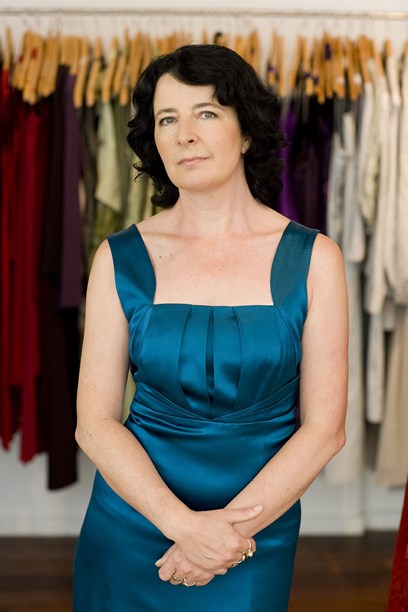
Caroline Church in her Auckland store, 2008. Photo by Michael Hall, Te Papa Press.
In 1979, she joined the two-year Apparel Technology and Administration course at the Auckland Technical Institute (now AUT). "We learned traditional skills from elderly experts who were the last generation trained in every process involved in making clothes," she says. "I can still make a man’s tailored jacket from start to finish, set a sleeve to fit perfectly, make bound buttonholes and pad stitch a collar."
As it was only the second year the course had been run, the idea of being trained to enter the garment industry, rather than through an apprenticeship, was new and unusual. Considered by prospective employers as "over-qualified yet lacking in experience," Caroline was unable to find a job.
After numerous unsuccessful interviews, she started work in a fabric shop where she "indulged her interest in textiles and built up an enormous wardrobe of clothes." It was the tail-end of punk and the height of the New Romantic Era, followed by the Japanese designer influence, so she had plenty of inspiration.
About that time, she was persuaded by Diann Waugh of Waughs in Dunedin that her clothes were good enough to sell to a wider market than just her friends. Diann’s friend Carol Mountford invited her to sew some clothes and sell them on consignment through her store, Wallis Clothing in Devonport.
A friend who worked in costume, asked Caroline to join her in opening a small shop in an old building in Surrey Crescent in Grey Lynn. She describes the building as "a rabbit warren of small studios with few facilities, no phone, no signage and no shop window." The business, which originally opened only on Fridays and Saturdays, soon had a cult following. Caroline was creating new stock weekly on a small domestic sewing machine in the corner of her bedroom.
She labelled her garments 'Caroline Church' and used printed school uniform labels to tag them. "I made accessories and underwear as well. My cherub earrings made from plastic wedding-cake decorations and spray-painted gold were a huge hit. No-one minded that the gold paint rubbed off on their necks!"
Caroline ended up running the shop on her own until she was joined in the business by designer Sherilyn Catchpole. The pair expanded the business, taking over more space in the building for a workroom, hiring staff and naming the shop State of Grace. They each had their own label. In 1996, State of Grace moved to a more established and salubrious retail location in Jervois Road in Herne Bay.

Outside the first State of Grace store, Grey Lynn, Auckland 1995. From left Sherilyn Catchpole, store manager Clare Taylor and Caroline Church. Photo by Kym Strathdee.
Caroline made clothes she wanted to own, clothes she fantasised about. Starting with a colour or an idea, travelling to Italy to visit 100-year-old textile mills, rummaging through suitcases full of beautiful silks from India or beading and laces from France, creating her own textiles to put together a story was at the heart of all her collections.

Textile storyboard, Summer 2005 collection. Image © Caroline Church.
Stemming from her interest in historical costume and her beading and embroidery skills, many of her garments had the luxury and hand-crafted feel of vintage. "I’ve always thought of what I did as a craft," she says. "There is nothing more satisfying than hand-finishing details. I hand-embroidered three-dimensional pohutakawa flowers on my wedding dress, which I wore with matching red boots, so I could have something unique."
The richness and exquisite detail of Caroline’s creations is captured by Aaron K in a fashion shoot for Lino magazine. Past Lives collection, Summer 2006.
In 1993, the State of Grace designers were invited by Tania Rupapera to supply her store Unity Collection in Wellington. More New Zealand stores followed, then others in Melbourne, Sydney, Brisbane and Perth.
While an invitation to show at Mercedes Australian Fashion Week in 1999 saw them show as State of Grace, they continued to produce their collections independently.
By 2000, they had 40 stockists and a large workroom to handle production.
For her Paper and Poets collection, Summer 2000, Caroline used cotton pocketing, embroidered stripe silk organza and crumpled shot silk taffeta.
State of Grace showed at the first New Zealand Fashion Week in 2001, to a full house at the Auckland Town Hall. They continued to exhibit on a smaller scale in Sydney through off-site shows and trade events, with global stockists of the brand peaking at 60.
When the media came calling, Caroline could always be relied upon for a good quote, as in 2003 when she told Style magazine that her full-skirted 1950s-style prom dresses were "dancing out the door".
Pieces in the Grandma’s Sunday Best collection 2003 included Lyla, an Italian tulle dress embroidered with knitting yarn, Daphne, an origami pleated silk coat and Augusta, a faux astrakhan coat worn with jewellery by Zelda Murray.
Desirous of further developing her creative signature, Caroline left State of Grace in 2003. She reverted to using her own name and launched the new label on the runway at New Zealand Fashion Week in 2004. Over the next few years, she showed regularly at New Zealand Fashion Week and, the Ponsonby Fashion Festival, judged the Hokonui and Pacifica Awards, and supported numerous charity events with runway shows.
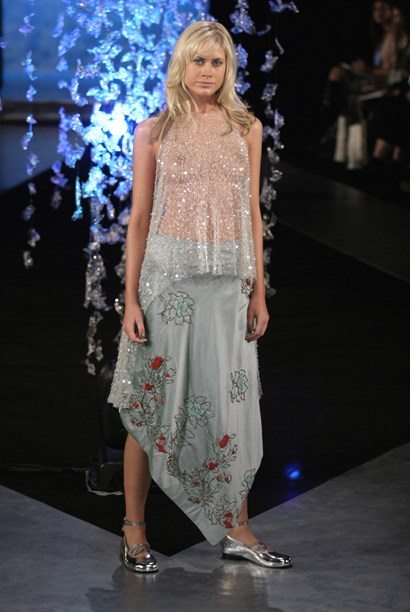
On the runway at New Zealand Fashion Week, a fish-scale sequinned mesh top and French knot embroidered silk dupion skirt. From A Tale of Mythical Sirens collection, Winter 2004.
Caroline says she loved incorporating her clothes into a show theme and watching the end result. "Starting with the collection, the theme, shoes, music, lighting, dressing a blank stage – it was like styling a piece of theatre."
Of her long-time stylist Chris Lorimer she says: "He could always see my vision. We did some great work together, made some lovely photos and fantastic shows."
For her New Zealand Fashion Week show in 2008, Caroline and Chris set up three tiered catwalks leading to a backdrop of lichen-covered tree branches reminiscent of a barren winter landscape. This was accentuated by a projection of storm clouds and, when the show began, sound effects of thunder and rain. The collection, The Effect of the Wind, featured a colour palette of muted pond greens, limes and greys, deep burgundy and knitted marls. The models’ hair was dishevelled, as if blown by the wind, and their cheeks were flushed with cold.
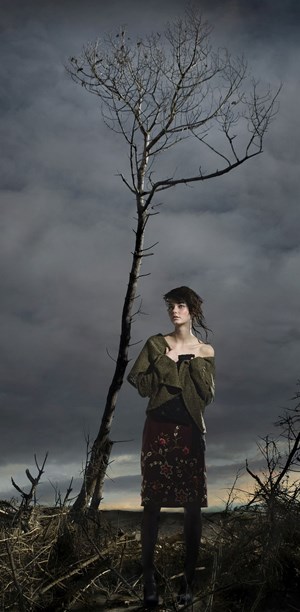
A textured wool jacket and skirt with three-dimensional wool embroidery. From The Effect of the Wind collection, Winter 2008. Photographer and digital: Chris Tak.
In her time, Caroline met many inspirational and important figures in the fashion world but says that having the esteemed fashion writer and historian Colin McDowell join her for lunch in her workroom and describe her clothes as "foxy but ladylike" would have to be one of the highlights.
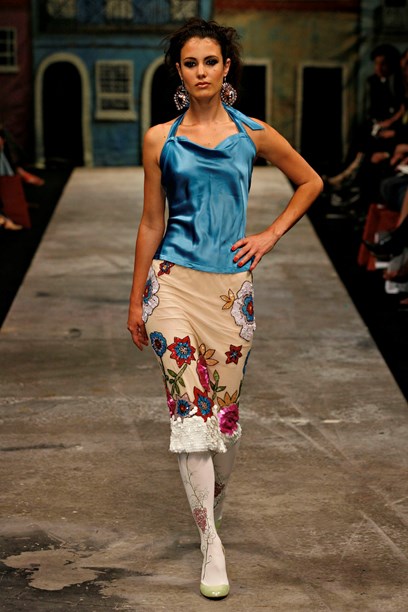
On the runway at New Zealand Fashion Week, Carmen Miranda, a silk satin halter top, worn with a French sequin-encrusted tulle skirt and screen-printed stockings. From A Reason to Rejoice collection, Winter 2006.
In a dramatic turnaround in 2009, Caroline decided to quit the fashion industry. "I was tired and felt that I had little left to give. If I had just stayed tucked away putting beautiful things together, rather than running a large-scale operation, I might still be doing it now. Many people were surprised by how 'hands-on' I remained, given the scale of the production."
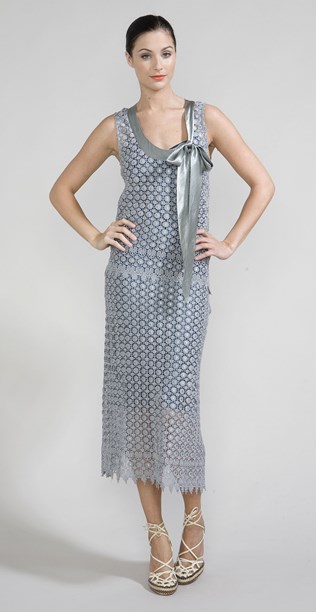
A heavy viscose lace dress from Caroline's last collection, Anyone for Tennis, Summer 2009. Photo by Sam Crawford.
Now working alongside her husband in his business (not fashion-related), Caroline Church says she’s often asked if she misses her old life. "I miss the creativity but not the stress. I like to think I left a tiny legacy with some of the many people who worked with me, and with students I passed my skills on to, even if it was just learning to sew a button on properly, or how to be ethical. And I’m proud when I meet women who still treasure my clothes after all these years."
Text by Cecilie Geary. Banner image of beaded tulle over pearl-encrusted French lace top from Summer 2005 collection. Photo by Aaron K.
Last published April 2019.